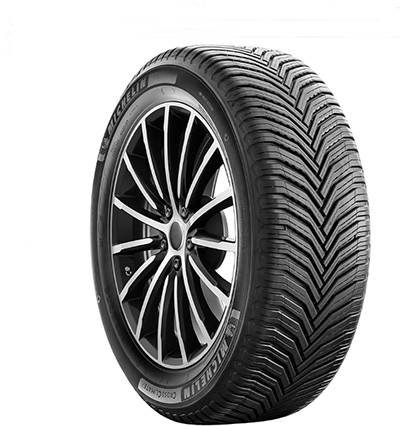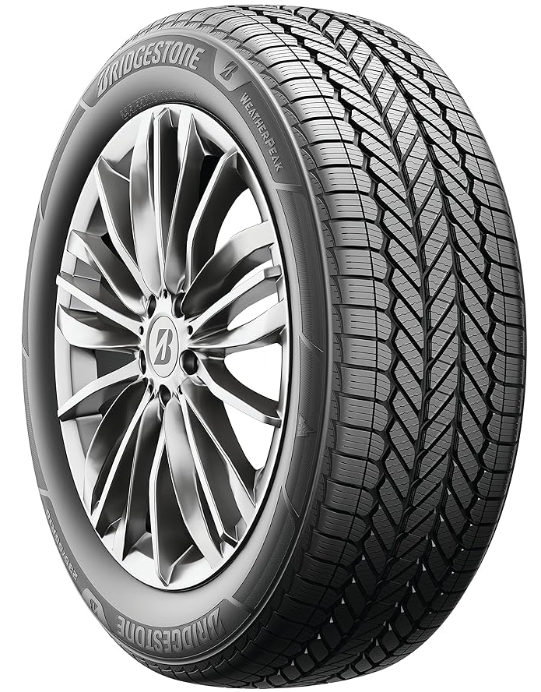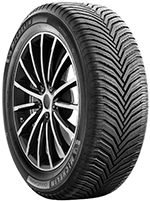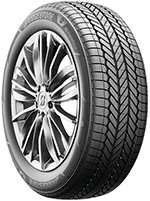Bridgestone Weatherpeak vs Michelin Crossclimate 2 – Which Reigns Supreme?
Discover which tire gives you the winning edge for durability, cost, and performance. Your ultimate SUV companion awaits.
Choosing the right tires for your SUV is more than a purchase—it’s a decision that impacts every drive. With the Bridgestone Weatherpeak and Michelin Crossclimate 2, you’re faced with two titans of traction, comfort, and longevity. Dive into our in-depth comparison to find your perfect match, and drive with confidence knowing you’ve made the best choice for your vehicle.
Ready for a tire transformation? See the full showdown and decide with confidence. Continue readng for the ultimate tire comparison guide.
You’re stuck between Michelin CrossClimate 2 and Bridgestone WeatherPeak for your SUV.
You’re weighing cost, brand reputation, and durability. Tread patterns, reviews, and ratings also sway your decision.
This article will dissect both options, providing detailed comparisons to help you decide. You’ll have a clear picture of which tire meets your needs by the end.
Table of Contents

Available Tire Sizes
You’ll find a greater number of available tire sizes in the Michelin Crossclimate 2 range, with rim sizes varying from 16 to 22 inches, compared to the Bridgestone WeatherPeak’s 15 to 20 inches. This size variance means that the Michelin Crossclimate 2 caters to a broader spectrum of vehicles. This could be a deciding factor if your car requires a larger rim size.
Given the same load ratings of SL and XL for both models, it’s clear that both tires can handle a similar load capacity. However, the weight range of the Michelin Crossclimate 2, which spans from 25 to 36.5 lbs, is beyond the 17 to 30 lbs range of the Bridgestone WeatherPeak. This suggests that the Michelin model might offer more durability due to its greater weight.
Analyzing the speed ratings, both tires share common ground with H and V ratings. Still, Bridgestone WeatherPeak offers an additional T rating. This indicates that the Bridgestone WeatherPeak may offer more versatility for drivers who prefer lower-speed-rated tires.
Tire Sizes
| Michelin CrossClimate 2 | Bridgestone Weatherpeak |
|---|---|
| 225/55R18 98H (Amazon) | 255/60R19 109H (Amazon) |
| 245/60R18 105V (Amazon) | 215/55R17 94V (Amazon) |
| 205/55R16 91H (Amazon) | 235/60R18 103H (Amazon) |
| 215/50R17/XL 95V (Amazon) | 235/70R16 106H (Amazon) |
| 235/45R18/XL 98V (Amazon) | 195/65R15 91H (Amazon) |
| 235/60R18/XL 107H (Amazon) | 245/50R20 102V (Amazon) |
| 245/45R18/XL 100V (Amazon) | 225/65R17 102H (Amazon) |
| 225/65R17 102H (Amazon) | 225/60R18 100H (Amazon) |
| 225/55R19 99V (Amazon) | 225/50R17 94V (Amazon) |
| 235/55R18 100V (Amazon) | 235/65R17 104H (Amazon) |
| 225/60R18 100H (Amazon) | 35/50R18 97V (Amazon) |
| 205/55R16 91H (Amazon) | 215/45R17 91V XL (Amazon) |
| 245/55R19 103V (Amazon) | 215/50R17 95V XL (Amazon) |
| 255/45R20/XL 105V (Amazon) | 215/60R17 96H (Amazon) |
| 235/55R20 102V (Amazon) | 245/40R18 93V (Amazon) |
| 235/55R19/XL 105V (Amazon) | 255/60R19 109H (Amazon) |
| 245/50R20 102V (Amazon | 215/55R18 95H (Amazon) |
| 215/55R17 94V (Amazon) |
Tread Appearance
Moving on from size and speed ratings, let’s delve into the tread appearance of both the Bridgestone Weatherpeak and the Michelin Crossclimate 2, to get a better understanding of their design and functionality.
Michelin Crossclimate 2 features a unique, directional tread pattern marked by V-shaped lugs. These lugs act as traction spoons, displacing water, slush, and snow, allowing for excellent winter traction. The lugs are neatly divided by longitudinal slits, separating the shoulder area from the central blocks.
The Bridgestone WeatherPeak, on the other hand, presents with a more advanced, symmetrical tread pattern with squared-off lugs strategically placed to provide excellent traction and control.
Let’s take a closer look at some of the unique features of each tire:
- The Crossclimate 2’s shoulder lugs have larger tread voids and carry rectilinear sipes, while the middle lugs offer dry traction and are equipped with interlocking wave-like siping.
- The WeatherPeak’s central region is densely arranged with lugs fortified with zigzag siping and chamfered edges, enhancing grip and stability in all weather conditions.
- The shoulder lugs of the WeatherPeak are larger, with smoother edges, and divided by thick longitudinal slits.
Both tires have designs that ensure top-notch performance in various conditions, be it wet, dry, or snowy.
Wet Traction and Grip
Often, you might find yourself wondering about the wet traction and grip of these tires, especially given their impressive tread designs. Let’s delve into the details, beginning with the Michelin CrossClimate 2.
It’s important to note that its wet grip is somewhat compromised due to fewer sipes, particularly towards the tire’s shoulders. These sipes, small slits in the tread, function like water vacuums, allowing the tread to firmly grip the surface. The fewer sipes limit the tire’s handling efficiency in wet conditions.
Despite this, the CrossClimate 2 does offer adequate wet grip, as demonstrated by its braking distances. However, its handling times don’t quite match up to premium all-season tires like the Bridgestone WeatherPeak. This is largely due to its shoulder sipes, which tend to stiffen on sharper turns, limiting flexibility.
In contrast, the Bridgestone WeatherPeak truly shines in wet conditions. It boasts full-depth interlocking sipes, which provide superior handling performance in all types of wet conditions. So, when it comes to wet traction and grip, the Bridgestone WeatherPeak clearly has an edge.
Hydroplaning
When it comes to hydroplaning, you’re likely facing a distinct difference between the performance of the Bridgestone WeatherPeak and the Michelin CrossClimate 2. The V-shaped tread design of the Michelin CrossClimate 2 provides efficient pathways for water particles, giving it an edge in hydroplaning resistance. In contrast, the WeatherPeak’s continuous longitudinal ribs don’t allow for as efficient water removal, especially sideways.
This discrepancy in design leads to distinct results:
- The Michelin CrossClimate 2 shines in hydroplaning scenarios, ensuring safer, more stable rides during wet conditions.
- The Bridgestone WeatherPeak struggles to keep up due to its continuous longitudinal ribs that hinder effective water removal.
- The WeatherPeak performs better in straight aqua tests, hinting at a higher float speed, which isn’t as effective in curved scenarios.
- The CrossClimate 2’s tread design efficiently channels water out, aiding in its superior performance.
Fuel Consumption
While you mightn’t immediately consider it, your choice between the Bridgestone WeatherPeak and the Michelin CrossClimate 2 can significantly impact your vehicle’s fuel consumption. This is mainly due to something called rolling resistance, which is affected by the tire’s construction.
The Bridgestone WeatherPeak has the upper hand when it comes to fuel efficiency. Its lighter structure means the lugs, or the parts of the tire that make contact with the road, have less weight pressure exerted on them. Consequently, they experience lower rolling resistance. The lower the rolling resistance, the less fuel your vehicle consumes.
On the other hand, the Michelin CrossClimate 2 has a slightly more aggressive tread pattern, with more voids towards the shoulders. This, coupled with its heavier structure, creates more friction as the weight is distributed on a smaller rubber area. The softer compound of the Michelin CrossClimate 2 also contributes to higher rolling resistance, leading to increased fuel consumption.
Therefore, if you’re aiming to maximize your miles per gallon, you may want to opt for the Bridgestone WeatherPeak over the Michelin CrossClimate 2.
Tread Noise
In terms of tread noise, you’ll find notable differences between the Bridgestone WeatherPeak and the Michelin CrossClimate 2. The Bridgestone employs Whisper Grooves technology, strategically placing ridges between the shoulder blocks to block the entry of air particles, the main culprit of noise generation.
Despite these barriers, some air still infiltrates, and Bridgestone tackles this with a Variable Pitch technology. This tech alters the geometry of the lugs slightly, creating varying pitches when air particles strike around. This fine-tuning prevents sound waves from amplifying, providing you with a quieter ride.
Michelin’s CrossClimate 2, on the other hand, uses a different approach. While it features wider shoulder voids, it mitigates noise with its streamlined, swooping lugs. This design allows the air to flow smoothly in and out, without striking the surrounding walls.
In summary, here’s what you need to remember about these tires:
- Bridgestone uses Whisper Grooves and Variable Pitch technology to minimize noise.
- Michelin uses streamlined, swooping lugs to reduce air collision.
- Despite the different approaches, both tires are designed to provide a quieter ride.
- You may not notice a significant difference in real-life scenarios.
Dry Traction
Your choice between Bridgestone Weatherpeak and Michelin Crossclimate 2 can significantly impact your vehicle’s dry traction performance, so let’s delve into the specifics of how these two models stack up.
When assessing dry traction, grip and handling are crucial areas of evaluation. In terms of grip, which normally involves braking distances, the CrossClimate 2 has the edge. Thanks to densely packed central lugs and a rounded contact patch, the CrossClimate 2 offers a firmer road grip. This means you’ll likely experience improved directional control and quicker braking performance, giving you that extra bit of confidence on the road.
In contrast, Bridgestone Weatherpeak excels in the handling department. It stands out with its superior stability and responsive steering, largely attributed to its lighter weight and interconnected shoulder blocks. These features result in a larger contact patch, providing superior handling even in dry conditions.
However, it’s worth noting that the Michelin tire has larger tread voids on the outer shoulder, which could potentially impact handling. Therefore, your choice will hinge largely on what you value more in a tire: grip or handling. So, consider your driving style and conditions before making a decision.
Durability and Treadwear
Transitioning from grip and handling, let’s delve into a critical aspect of your tire choice: durability and treadwear.
The Michelin CrossClimate 2 exhibits a higher rolling resistance, which signifies quicker tread wear. This can be attributed to its heavier weight, with each lug bearing more pressure, increasing friction with the road surface, and leading to faster rubber wear. Additionally, its softer tread compound is more prone to rapid degradation.
Despite these factors, it’s essential to acknowledge that the CrossClimate 2’s weight is a testament to its robust internal construction. This means it generally offers better durability compared to the Bridgestone Weatherpeak. Consider these points:
- Its construction includes wide steel belts for strength
- A seamless full-cover reinforcement ply enhances its reliability
- Folded belt-edge tape offers better defense against punctures
Despite these features, the tire’s treadwear is quicker due to its weight and softer compound.
From an analytical perspective, while Michelin CrossClimate 2 showcases a superior build, its faster tread wear gives Bridgestone Weatherpeak an edge in this category. Thus, your choice should reflect your specific needs and driving conditions.
Winter Performance
Now, let’s dive into the winter performance of these two tires, carrying forward our discussion on treadwear and durability.
In terms of traction on icy roads, the Crossclimate 2 emerges as the undisputed champion. Its elongated lugs and interlocking sipes effectively scoop up slush and snow, providing enhanced forward momentum compared to the WeatherPeak.
Both tires are 3PMSF rated, signifying that they perform about 10% better than an average all-season tire in snowy conditions. However, it’s important to note this rating only pertains to acceleration, not braking or handling.
What sets the Crossclimate 2 apart are its narrower section width and heavier weight. These features allow it to apply more pressure on the snow, creating an optimal snow-to-snow contact which is crucial as snow sticks better to itself than rubber.
Despite both tires demonstrating commendable winter performance, the Michelin Crossclimate 2’s superior design and functionality give it the edge, reaffirming its position as the stronger contender in winter conditions.
What tires are comparable to Michelin CrossClimate 2?
When you’re considering alternatives to the Michelin CrossClimate 2, the Bridgestone WeatherPeak should be on your radar. This all-season tire offers comparable performance across various road conditions, with unique features that set it apart.
The Bridgestone WeatherPeak boasts a treadwear rating of 700, indicating its high durability. Its open shoulder slots and evolving sipes promote efficient water evacuation, enhancing grip on wet surfaces. The tire’s full-depth 3D sipes contribute to strong wear performance and grip on snowy roads.
Comparatively, the Michelin CrossClimate 2 has a treadwear rating of 640. It excels in dry braking and snow performance but has received average reviews on wet braking and handling. The CrossClimate 2’s unique tread pattern also tends to pick up stones easily, which could be a potential downside for some drivers.
In terms of size, the Bridgestone WeatherPeak is available for rims sizes between 15 to 20 inches, while the CrossClimate 2 fits 16 to 22-inch rims. The WeatherPeak is rated for T, H, and V speeds, and the CrossClimate 2 for H and V speeds.
Is Bridgestone WeatherPeak a quiet tire?
In terms of noise level, you’ll find that the Bridgestone WeatherPeak is designed to provide a relatively quiet ride. The tire’s design employs advanced technology to reduce noise output, enhancing your driving experience by providing a quieter, more comfortable ride.
The WeatherPeak features an open shoulder slot design that significantly decreases road noise. This is achieved by evenly distributing the sound waves across the tire’s surface, reducing the intensity of the noise you hear inside the vehicle. Also, the full-depth 3D sipes in the tread design not only offer strong wear performance and grip on snowy roads but also contribute to the tire’s quiet operation.
Moreover, the tire’s Uniform Tire Quality Grading (UTQG) rating, which is a comparative grade assigned by the manufacturer based on various performance factors, including noise level, also supports its quiet ride claim. While these grades aren’t government grades and don’t guarantee mileage or overall tire quality, they do provide useful comparative data for buying decisions.
However, remember that actual noise levels can vary depending on several factors such as the type of vehicle, road conditions, tire pressure, and individual driving habits. Proper tire maintenance, including regular tire rotation and pressure checks, can also significantly affect the noise level.
How long do Bridgestone WeatherPeak last?
You might be wondering about the longevity of the Bridgestone – WeatherPeak tires, and it’s a great question to ask. Touring tires such as this are designed for durability and the WeatherPeak is no exception. These tires are crafted to last up to an impressive 70,000 miles.
This impressive lifespan is due to the tire’s advanced construction and the use of quality materials. Bridgestone employs a unique rubber compound that resists wear and tear, ensuring the tires maintain their tread depth for longer. They also use a symmetrical tread pattern with squared-off lugs, which promotes even wear across the tire surface, extending the tire’s lifespan.
The WeatherPeak also features full-depth 3D sipes. These sipes contribute to strong wear performance and grip on snowy roads, ensuring the tire’s performance doesn’t degrade significantly over time. Furthermore, the tires’ evolving sipes improve wet and snow performance, maintaining the tire’s effectiveness throughout its lifespan.
However, it’s important to remember that the actual lifespan of your tires can be impacted by several factors. These include your driving style, the condition of the roads you typically travel on, and how well you maintain your tires. Regular tire rotations, maintaining the correct tire pressure, and inspecting your tires regularly for damage can all contribute to maximizing their lifespan.
Is Bridgestone WeatherPeak a winter tire?
Despite its impressive performance in snowy conditions, the Bridgestone WeatherPeak isn’t classified as a winter tire, but rather an all-season one. This distinction might seem minor, but it’s crucial in understanding the tire’s design and intended use. Let’s delve into the specifics.
The Bridgestone WeatherPeak is designed to be a one-tire solution for drivers in environments that experience all four seasons but don’t receive severe snowfall or icy conditions that would necessitate a dedicated winter tire. The tire compound is durable and all-season, molded into a symmetric pattern to provide consistent traction in various weather conditions.
Bridgestone has incorporated features like open shoulder slots for efficient water evacuation in wet conditions and full-depth 3D sipes for excellent grip on snowy roads. The evolving sipes improve wet and snow performance, while the groove channel evolving sipes and snow vices promote snow compaction and water flow.
The WeatherPeak also holds a Treadwear rating of 700 under the Uniform Tire Quality Grading (UTQG) system. This comparative grade, assigned by Bridgestone, indicates strong wear performance.
In comparison, winter tires are specifically designed to perform optimally in cold temperatures, providing better traction on snow and ice. They typically have a more aggressive tread pattern and softer compound to maintain flexibility in freezing conditions.

Conclusion
In weighing the Michelin CrossClimate 2 VS Bridgestone WeatherPeak, consider their respective strengths.
The WeatherPeak’s lasting durability and quiet ride are noteworthy.
However, the CrossClimate 2 holds its own with comparable performance and excellent traction.
Both can handle Minnesota’s harsh winters, but your final choice should reflect your specific needs and budget.
With thorough analysis and careful consideration, you’ll find the tire that best suits your SUV.





